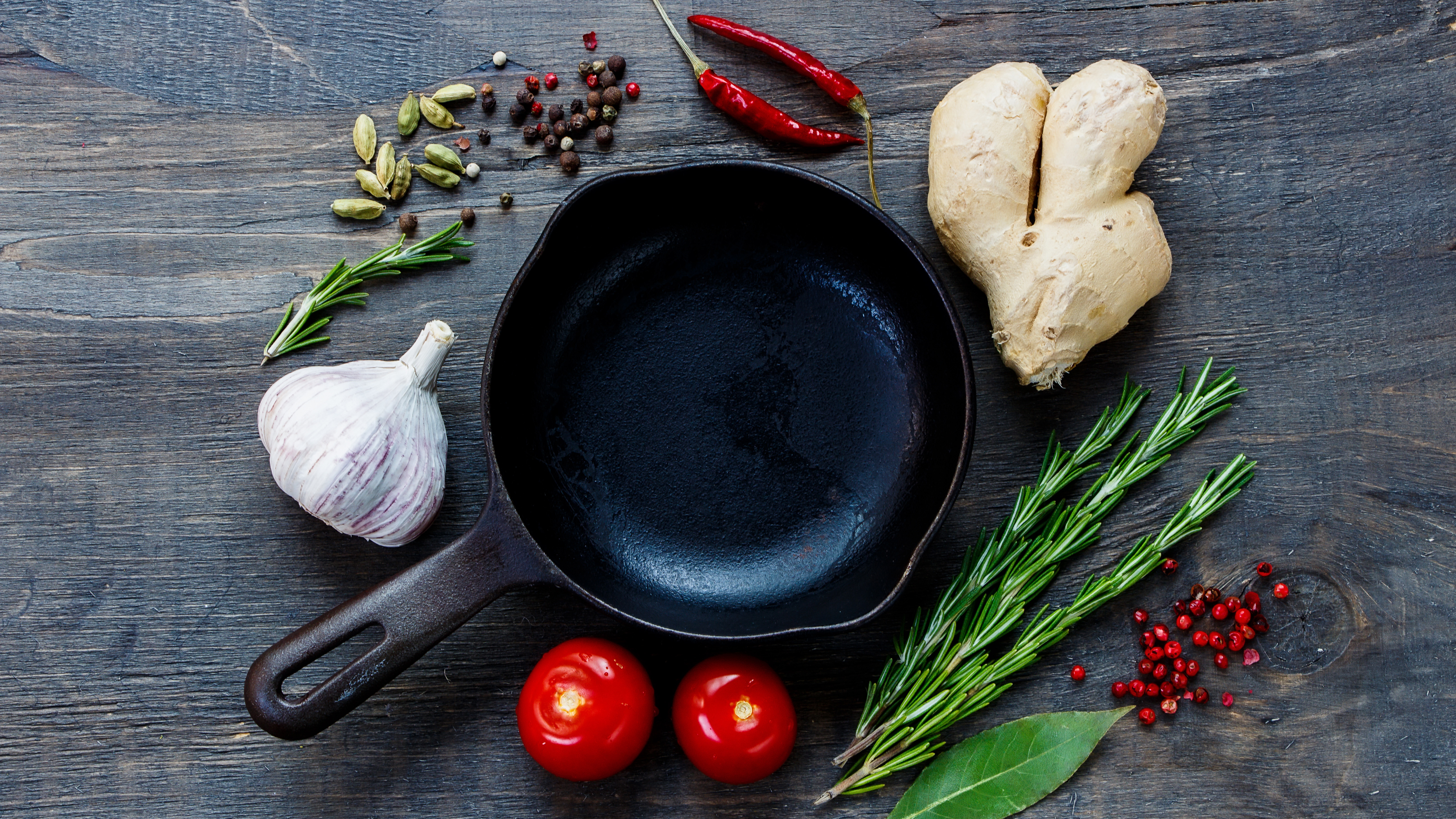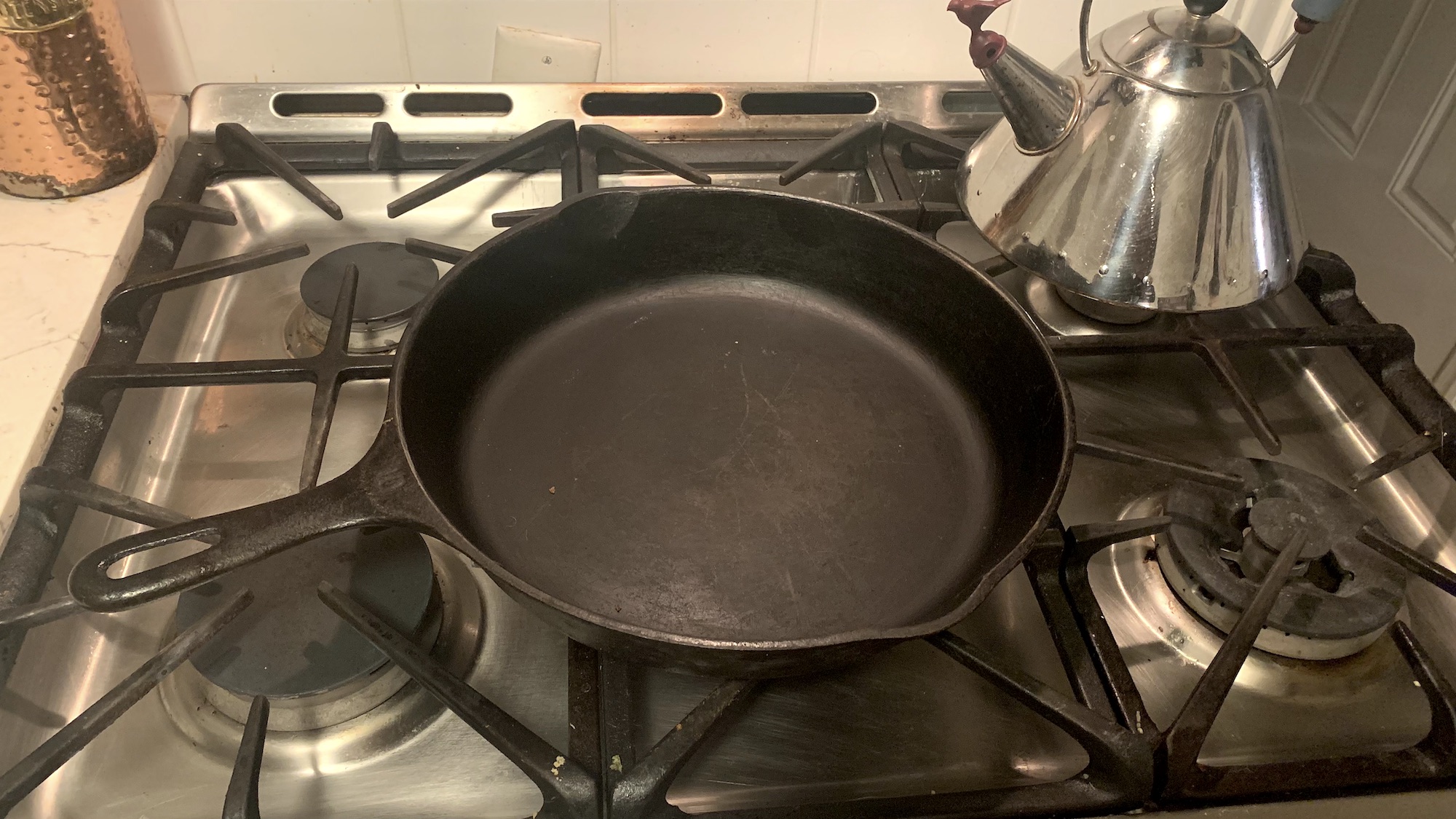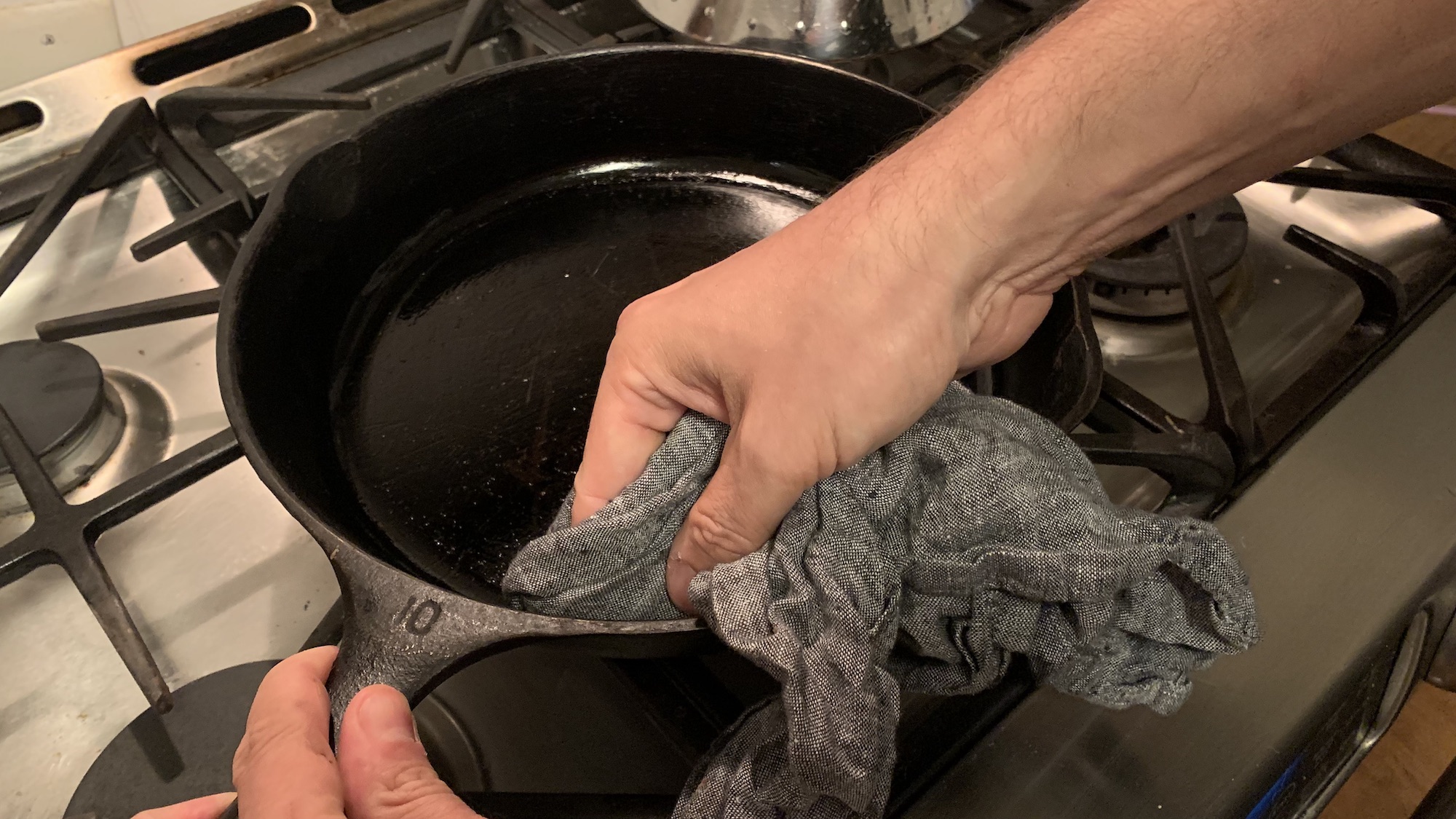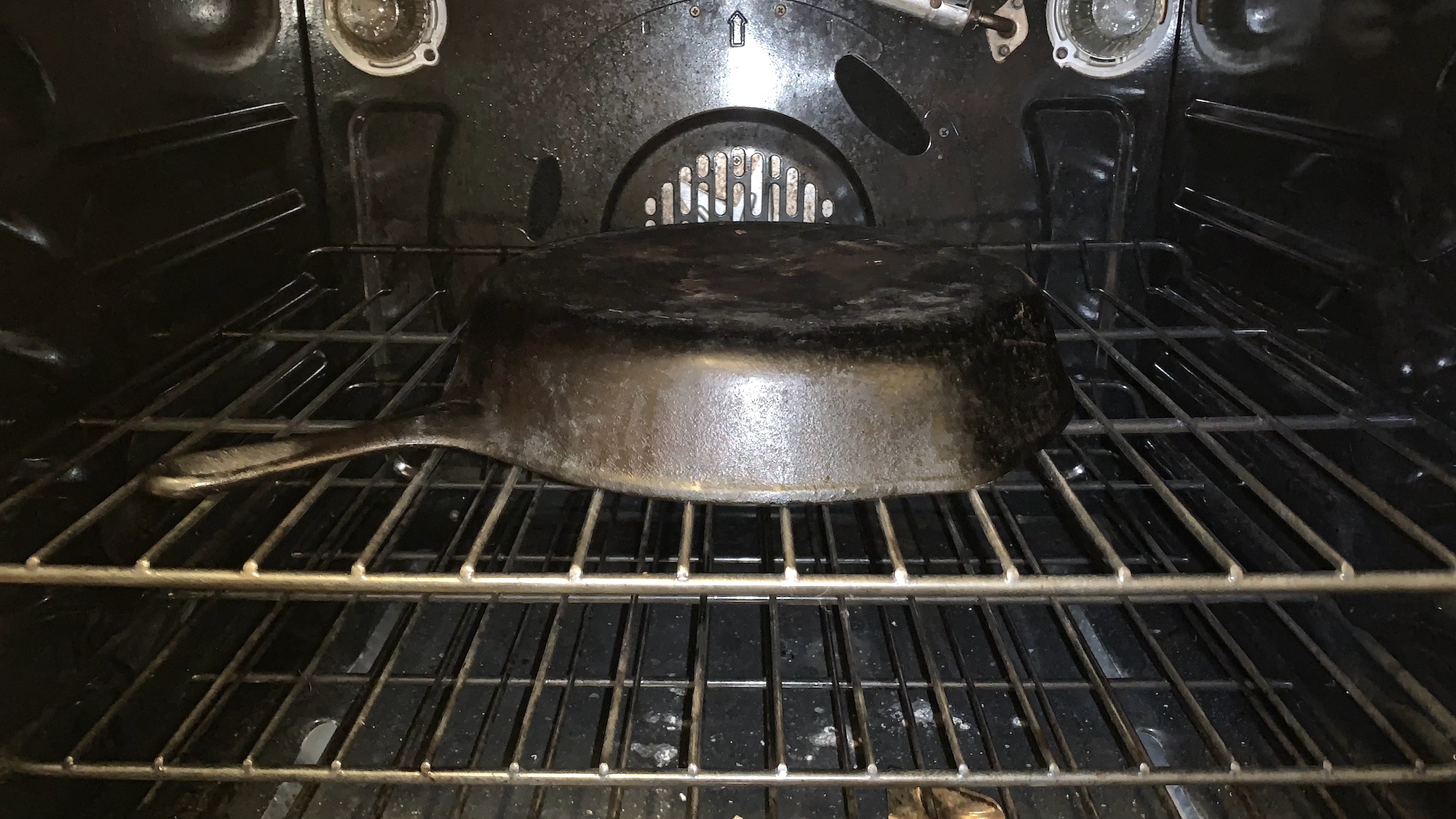How to season a cast iron skillet and how often you should do it

If you enjoy searing delicious meals, knowing how to season a cast iron skillet can make all the difference. If you own this particular type of cookware, you’ll find food will stick to the surface and the pan will be more exposed to rust as well. That’s why seasoning is arguably as important as knowing how to clean a cast iron skillet. Apart from cast iron skillets, some Dutch ovens will also need seasoning.
Washing detergent
Sponge or stiff brush
Cooking oil
Dry cloth or paper towels
Aluminium foil
While it sounds tricky, seasoning one of the best cast iron skillets is quick and easy. What's more, all it takes is a few household products, which you may already have in your kitchen cabinets. If you’re new to seasoning, don’t worry — here we breakdown exactly what you need to do step-by-step and answer any questions you may have along the way. So, here’s how to season a cast iron skillet in just four easy steps.
Want to take better care of your cast iron skillet? Here are 5 mistakes you’re making with your cast iron skillet right now. Be sure to also check out 6 foods you should never cook in a cast iron skillet.
Seasoning is only necessary on a traditional cast iron skillet. For more info on the differences, check out cast iron vs enameled cast iron skillet — which is better?
Also, here are 7 things I've learned after cooking on cast iron over the years.
How to season a cast iron skillet
1. Preheat your oven — First you need to preheat your oven at a temperature of 400-450°F in preparation for your seasoned skillet. The final temperature will depend on the smoke point of the oil you choose. Some can go as high as 500°F.

Get instant access to breaking news, the hottest reviews, great deals and helpful tips.
2. Add a little oil and rub in to coat — Next up, get your chosen oil and pour a tablespoon or two into the skillet. Be mindful not to pour too much, as you’ll only need a thin coat of oil to season. Then with a clean dry cloth or a paper towel, rub the oil around to coat the entire skillet. Once you’ve oiled the inside, don’t forget to do the same for the outside and the bottom of the skillet.

3. Put the skillet in the oven to bake — The key is to place the skillet upside down on the center shelf of the oven to bake for an hour (yes, one hour). It’s always a good idea to place aluminium foil just underneath it, to catch any drips of oil. In any case, you can always read our tips for how to clean an oven to keep it grease-free and spotless.

4. Let the skillet cool down before storing — Once your skillet is baked, leave it to completely cool down before taking it out of the oven.
You should notice a smooth, shiny surface on your skillet, meaning it’s ready to go for your next cooking session! Before storing in your cupboard, it’s recommended to line the skillet with a paper towel to give it extra protection from rust. But you can eliminate this with proper care if you follow our steps on how to clean your skillet and remove rust.
More tips when seasoning your cast iron skillet
- What oil should I use to season my skillet? — Generally, you can use any oil in your cupboard. However, vegetable oil, melted butter or canola oil are popular choices. Remember there’s no need to use your best premium brand for seasoning!
- How often should I season my skillet? — To get the best out of your cast iron skillet, it’s recommended that you oil it after each use. However, depending on how frequently you use it, 2-3 times a year is sufficient.
- How can I tell when my skillet is seasoned properly? — A well-seasoned skillet will be noticeably dark with a shiny, semi-gloss finish. Best of all, it won’t have any rusty patches and will look revived again!
If the time has come to replace your skillet, here's 7 things you should check when buying a cast iron skillet. You might also be interested in reading I tried the Amazon Basics Dutch oven — here's what I learned.

As the Homes Content Editor, Cynthia Lawrence covers all things homes, interior decorating, and garden-related. She has a wealth of editorial experience testing the latest, ‘must-have’ home appliances, writing buying guides and the handy ‘how to’ features.
Her work has been published in various titles including, T3, Top Ten Reviews, Ideal Home, Real Homes, Livingetc. and House Beautiful, amongst many.
With a rather unhealthy obsession for all things homes and interiors, she also has an interior design blog for style inspiration and savvy storage solutions (get rid of that clutter!). When she’s not testing cool products, she’ll be searching online for more decor ideas to spruce up her family home or looking for a great bargain!
- Katie MortramHomes Editor
